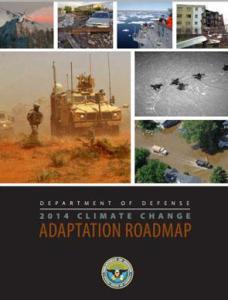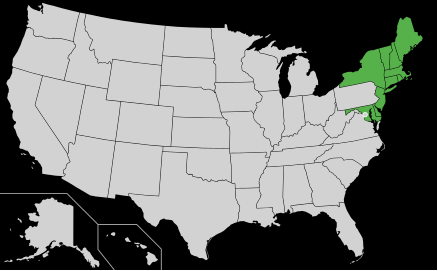Fracking Risk Compared to Thalidomide and Asbestos
November 29, 2014Mt. Pleasant Family Takes Range Resources to Court
December 2, 2014By Bruce Lieberman, Yale Climate Connections, October 28, 2014 The image is arresting, a dramatic illustration of a chaotic future fueled by climate change crises. It ran with a Bloomberg story on the Pentagon’s recent report reviewing how continued climate change threatens national security.
Shot from a Pakistan Army helicopter during relief operations in Goza, Pakistan, in September 2010, it shows desperate men and boys scrambling for aid in chest-deep floodwaters. Heavy monsoon rains had begun in July of that year, inundating the Indus River Basin and putting one-fifth of the nation under water.
“Rising global temperatures, changing precipitation patterns, climbing sea levels, and more extreme weather events will intensify the challenges of global instability, hunger, poverty and conflict,” Secretary of Defense Chuck Hagel says in his introduction to DOD’s 20-page “2014 Climate Change Adaptation Roadmap.”
From ‘Threat Multiplier’ to ‘Present-Day Threat’
“They will likely lead to food and water shortages, pandemic disease, disputes over refugees and resources, and destruction by natural disasters in regions across the globe.”
The Pakistan flooding four years ago provided military planners a powerful example of future instabilities. The military has characterized continued climate change as a “threat multiplier” to the many current challenges in trouble spots around the globe, and it’s been a concern in military circles for years. The U.S. Navy, for example, has been concerned over impacts of rising seas and over implications of opening-up of the Arctic as sea ice disappears.
But while the new report is the latest in a series, “the Pentagon’s characterization of it as a present-day threat demanding immediate action represents a significant shift for the military, which has in the past focused on climate change as a future risk,” the New York Times reported in its story on the release of the study.
Coral Davenport reported there on discussions among some experts that the rise of the Islamic State — aka “ISIS” and “ISIL” — may in part be tied to a drought triggered by climate change. Farmers facing water shortages relocated to Syrian cities “and triggered situations where youth became more susceptible to joining extremist groups,” said George Washington University’s Marcus D. King, an expert on climate change and international affairs. Meanwhile, the Islamic State “has seized scarce water resources to enhance its power and influence,” the Times reported.
DOD Vulnerabilities Review Under Way
DOD now is completing a separate review of vulnerabilities to military installations, particularly along coastlines. Defense planners are working under the projection that sea levels will rise 1.5 feet over the next 20 to 50 years, The Washington Post reports.
In its 2014 roadmap, DOD specifies four primary climate change phenomena it says will impact military operations: rising global temperatures, changing precipitation patterns, increasing frequency and/or intensity of extreme weather, and rising seas and storm surges.
In addition to exacerbating existing trouble spots and creating new ones, those four primary phenomena are expected to complicate military planning and operations, training, and testing, along with built and natural infrastructure, and acquisition and supply chains.
For example, more numerous fire hazard days caused by an ongoing drought and extreme heat could hamper outdoor training activities. Meanwhile, increased dust in drier climates during training can interfere with sensitive equipment.
The roadmap report calls for increased cooperation between DOD and outside groups to better manage consequences of climate change. For planning and operations, for example, the roadmap recommends more cooperation with the Coast Guard and other Arctic nations; continued collaboration with the State Department and foreign militaries; collaboration with interagency, state, and local officials; and “cooperation with partner nations to enhance planning, responses, and resilience to the effects of climate change.”
The 2014 Defense Department report comes at a time when the U.S. is trying to build support for a 2015 United Nations agreement on climate change. This December, climate change negotiators are to meet in Peru to work on a draft of that agreement, which is expected to call for the globe’s biggest CO2 polluters to cut their emissions dramatically.
More on Secretary Hagel’s announcement:
Pentagon: Climate change a national security threat, The Hill.
Pentagon unveils plan for military’s response to climate change, The Los Angeles Times.
Climate change poses urgent national security threats, says Pentagon, Aljazeera America.
U.S. military lays out plan for coping with climate change, Reuters.
Pentagon: global warming will change how US military trains and goes to war, The Guardian.
Hagel to Address ‘Threat Multiplier’ of Climate Change, DOD News.




